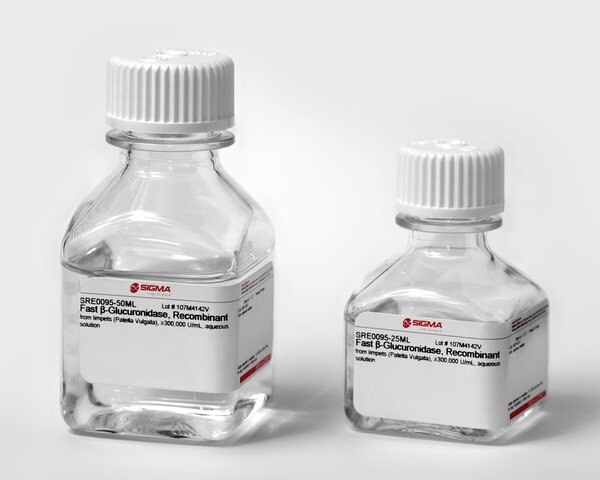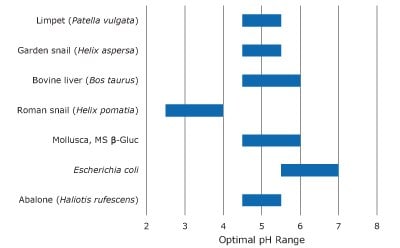Drug Analysis Enzymes

Most drugs, hormones and xenobiotics are metabolized by human and animal bodies into hydrophilic molecules and then quickly excreted in body fluids, mainly urine. Those conjugated drugs and molecules are mainly conjugated with glucuronides or sulfates (glucuronogonjugates and sulfoconjugates). In humans, glucuronidation is the main phase II metabolic pathway. Conjugates are difficult to detect and quantitate by chromatographic instruments, gas chromatography (GCMS), and liquid chromatography (LCMS). Hydrolysis with Beta-glucuronidase and/or sulfatase cleaves conjugated bonds and reverts drugs, hormones, and xenobiotics back into their initial free form. Freed analytes are easily “visible” and measurable by laboratory instruments for screening or quantitation.
Beta-glucuronidase enzymes have been available to the life-science and diagnostic industries for over five decades, primarily extracted from the entrails of different animals (Helix pomatia or Haliotis rufescens), or bacterial sources (E. coli). Since 2015, there has been a shift to recombinant beta-glucuronidases in analytical toxicology and routine urine drug testing. Due to improved analytical quality, ease of sample preparation, reduced incubation time, and automation capacity, our recombinant beta-glucuronidase enzymes (SRE0093, SRE0095) are increasingly being used across multiple application fields as an analytical enzyme.
Application Fields for Beta-Glucuronidase and Sulfatases as Analytical Enzymes
Urine Drug Testing (UDT) is the main routine application for beta-glucuronidase and sulfatase. The enzymes used in UDT applies to different types of testing:
- Forensic drug testing (criminal justice)
- Human antidoping testing (competitive sports)
- Animal antidoping (competitive racing)
- Workplace Drug Testing (new employees)
- Xenobiotic exposure testing (environmental exposure)
- Prescription and Therapeutic Drug Monitoring (compliance and companion assays)
HYDROLYSIS WITH ENZYMES

Figure 1. Optimal pH ranges for a variety of glucuronidase enzymes from common sources.
Efficient and complete hydrolysis of glucuronide and sulfate metabolites is crucial for urine drug testing, particularly when quantitation is needed. A long history of academic research has found many forms of beta-glucuronidase and sulfatase in nature, each having specific properties. One of the most impactful parameters relating to enzyme activity is pH. To assist with your enzyme selection needs, please see our Optimal pH Range chart with a list of pH optima for the variety of glucuronidase enzymes from common sources.
Our sites have been manufacturing native and recombinant beta-glucuronidases since 1960. All our beta-glucuronidases and arylsulfatase are produced within the ISO9001 quality system. We continue to dedicate our effort in making hydrolysis quicker, easier to implement, and ready-to-use.
Products
To continue reading please sign in or create an account.
Don't Have An Account?